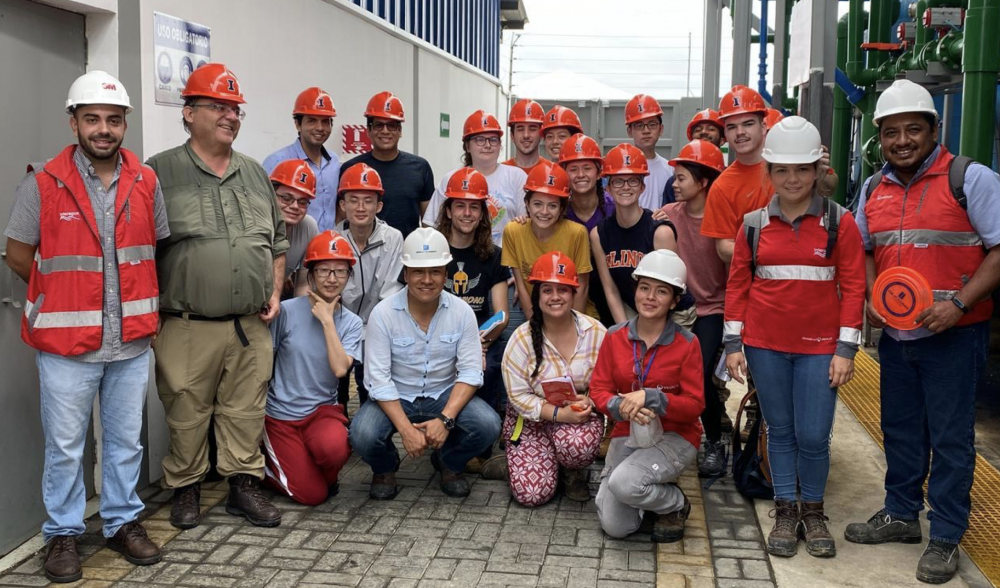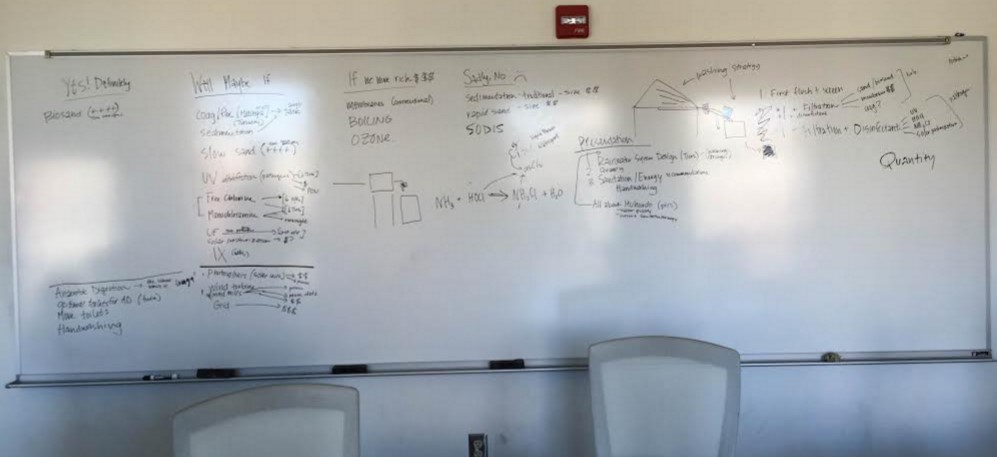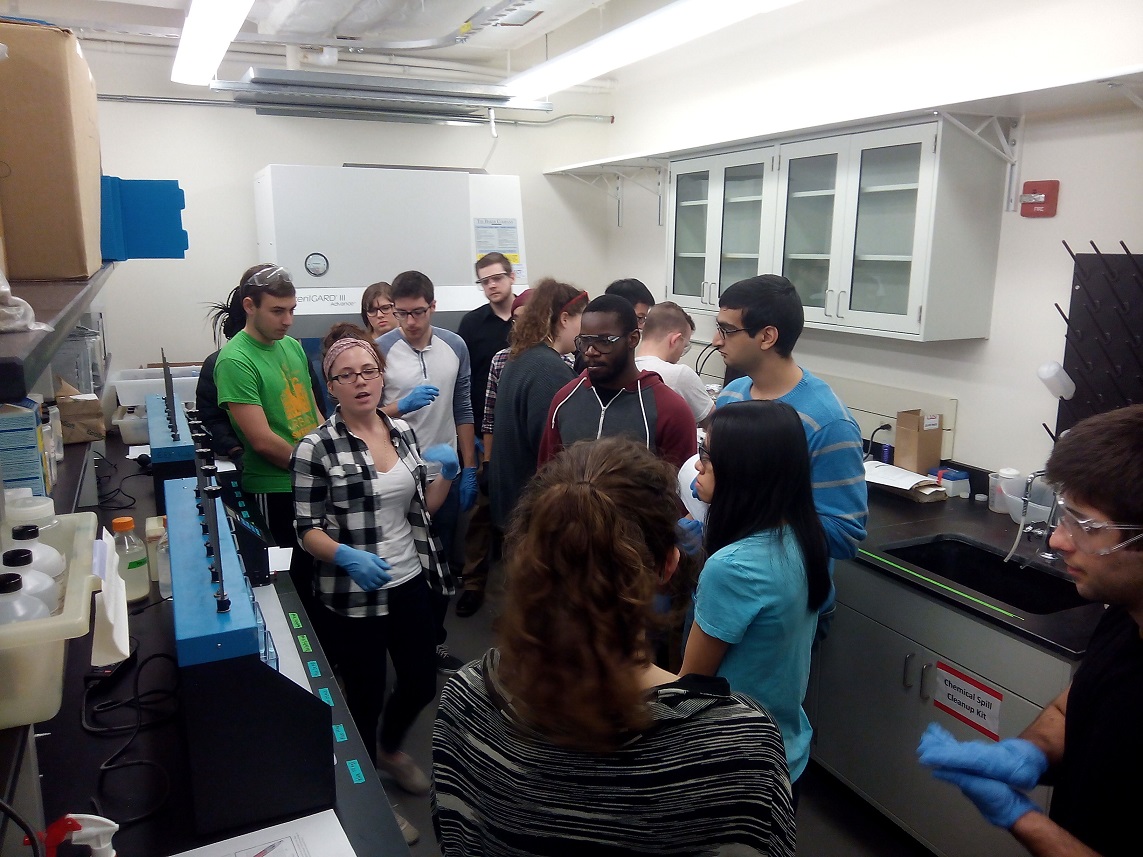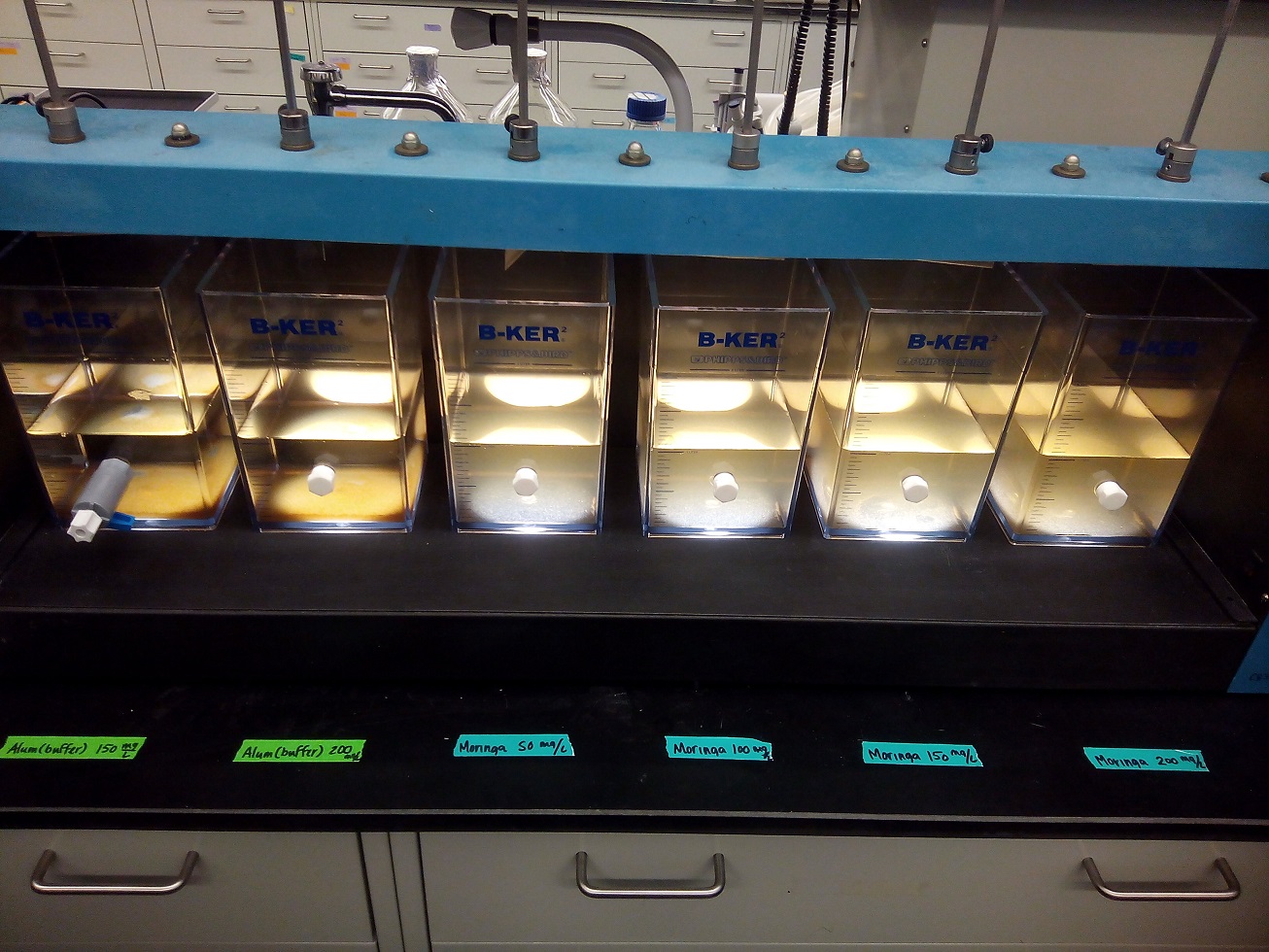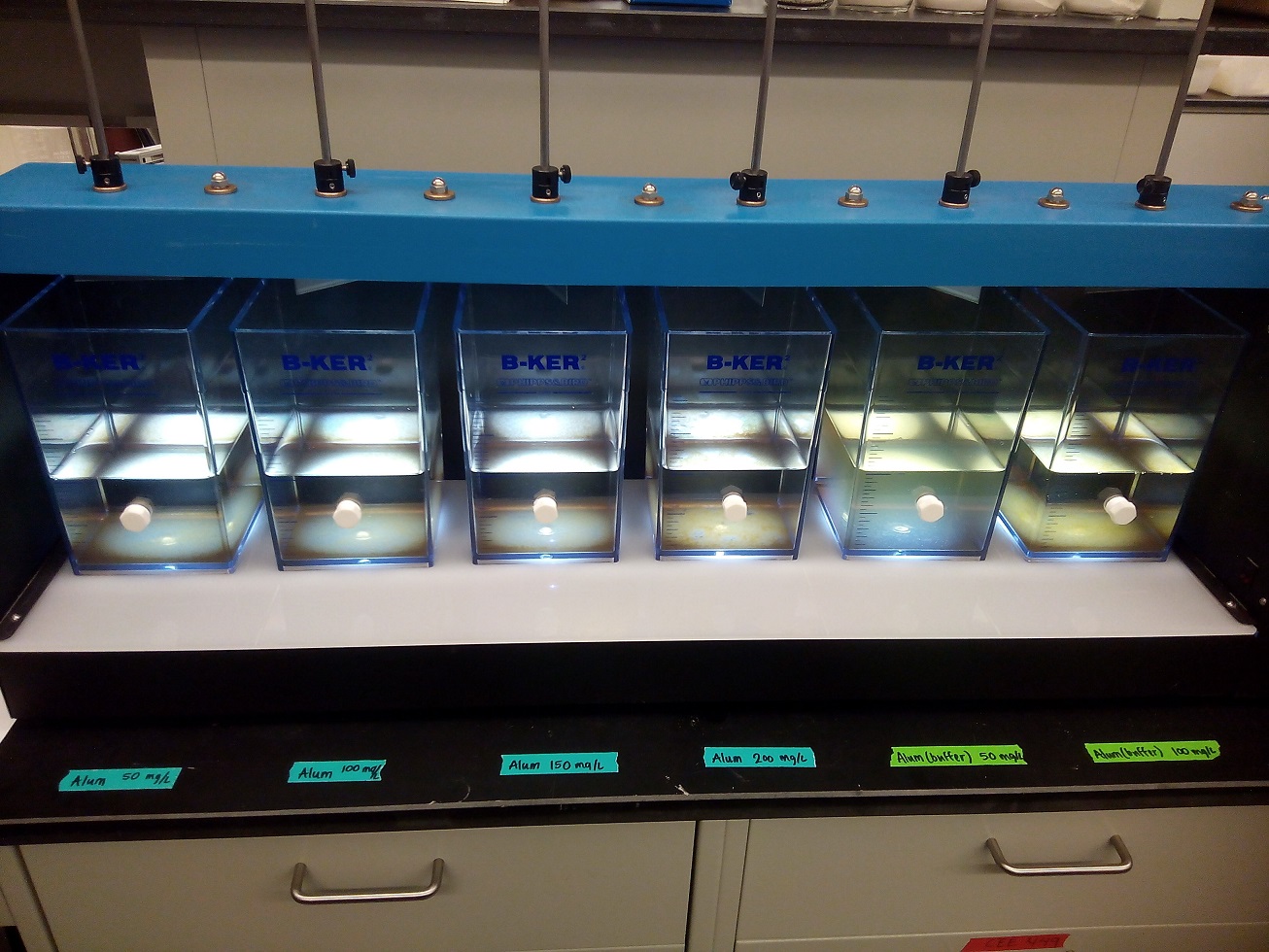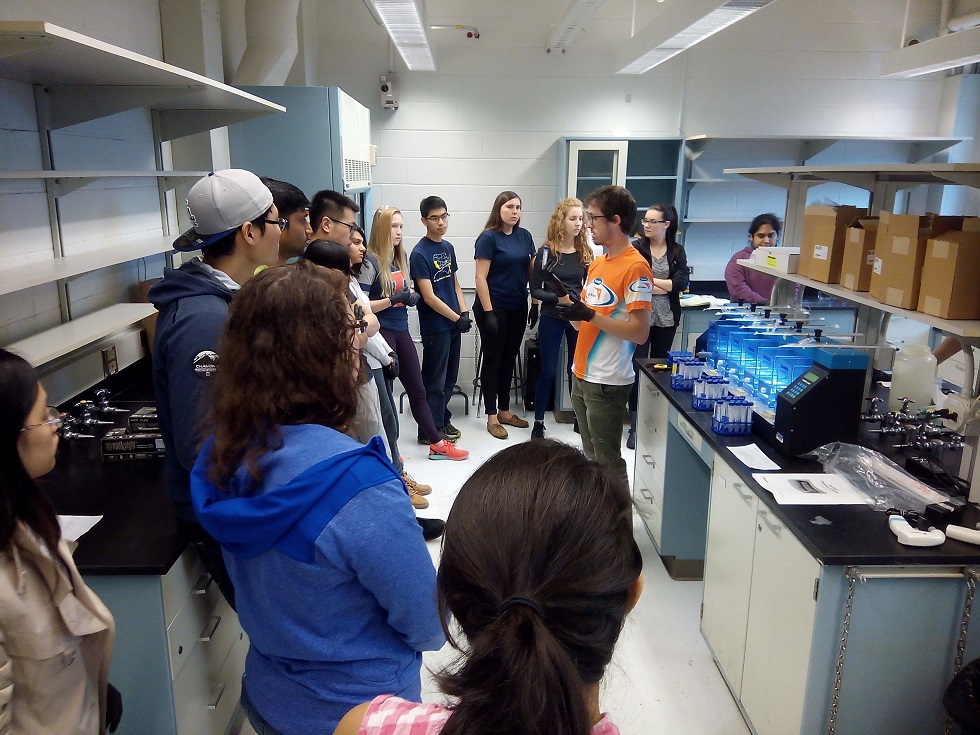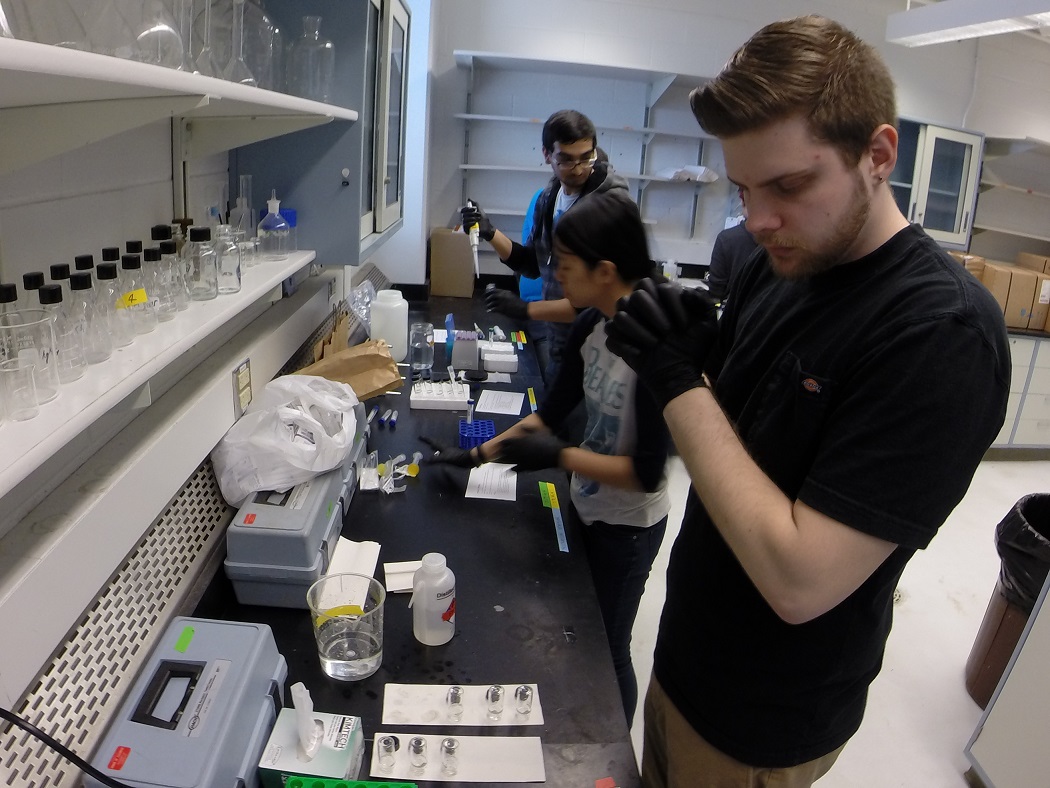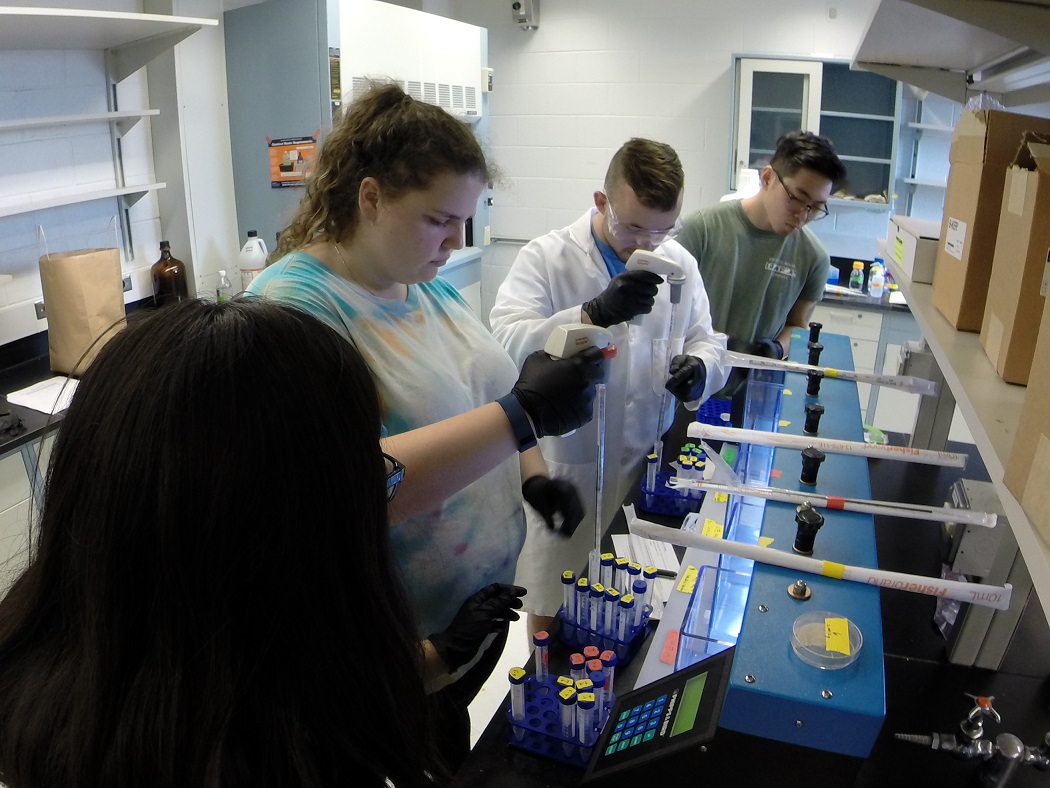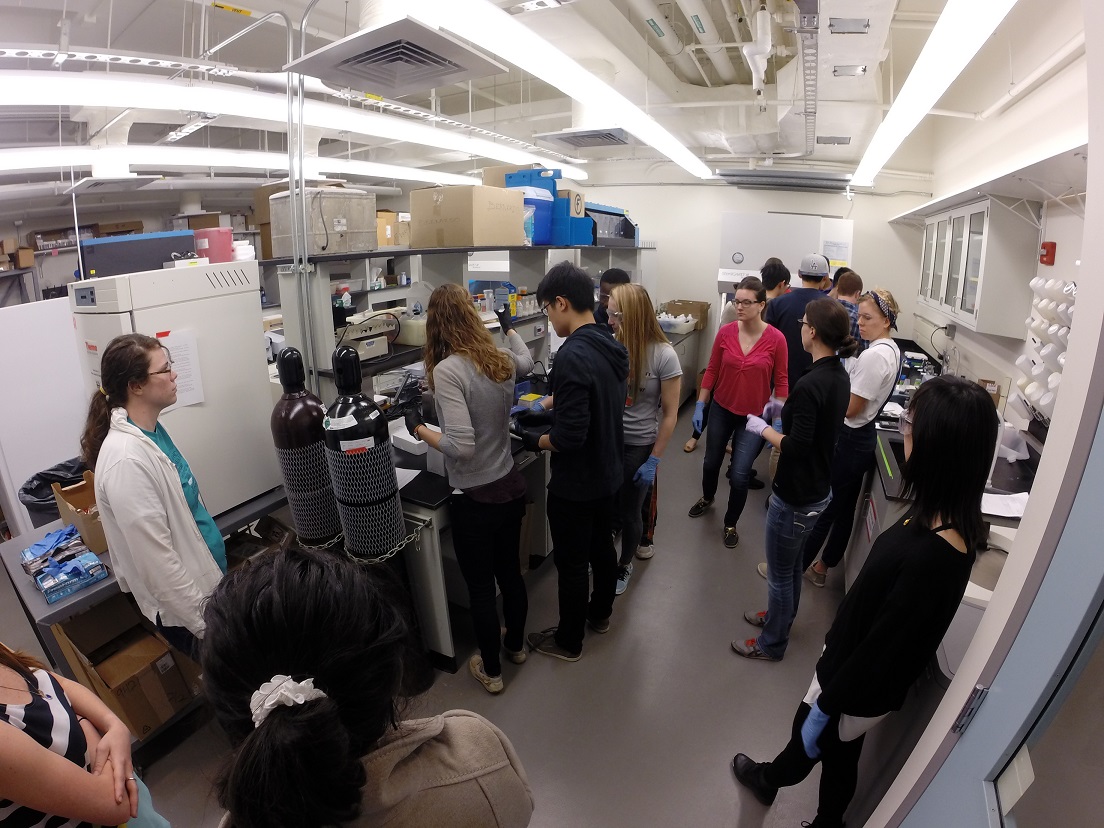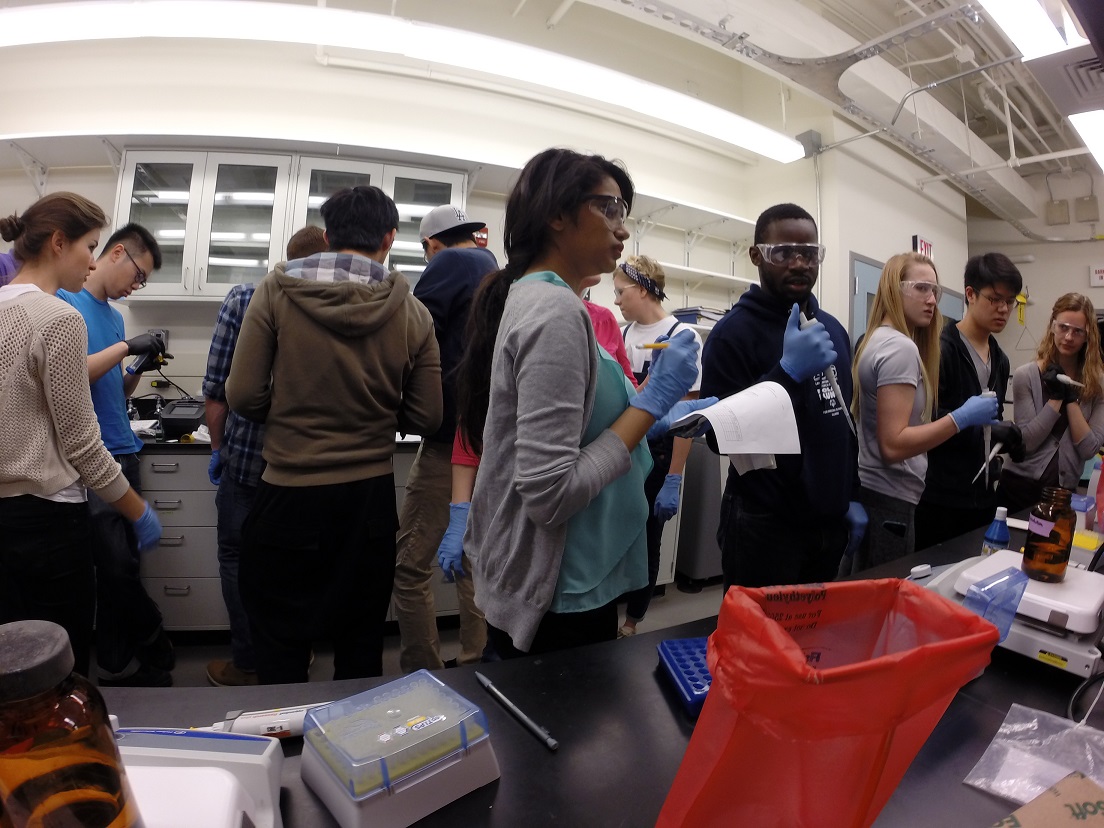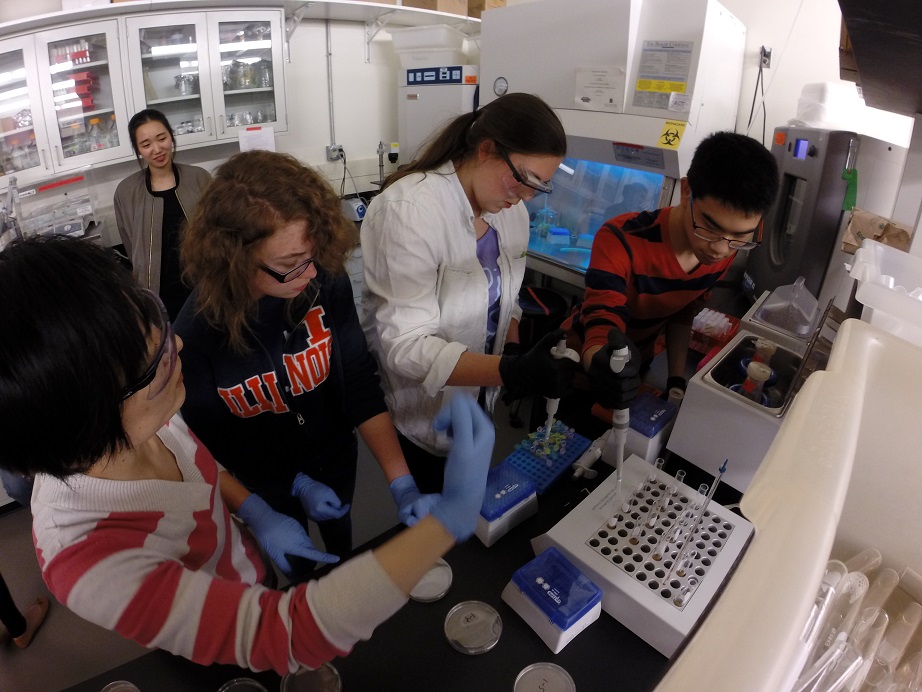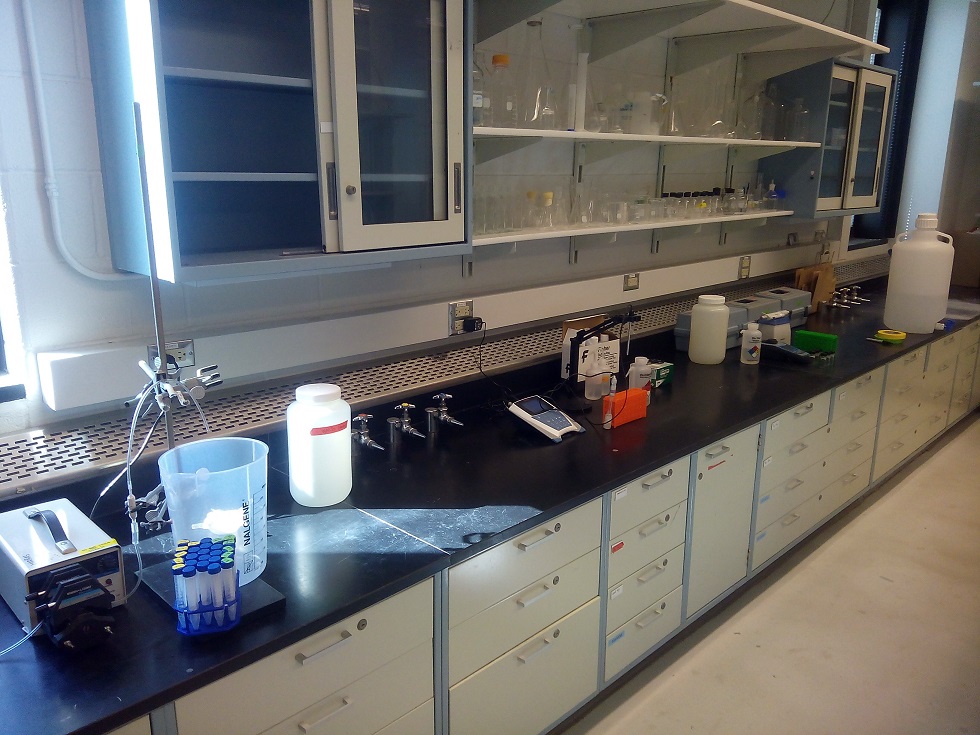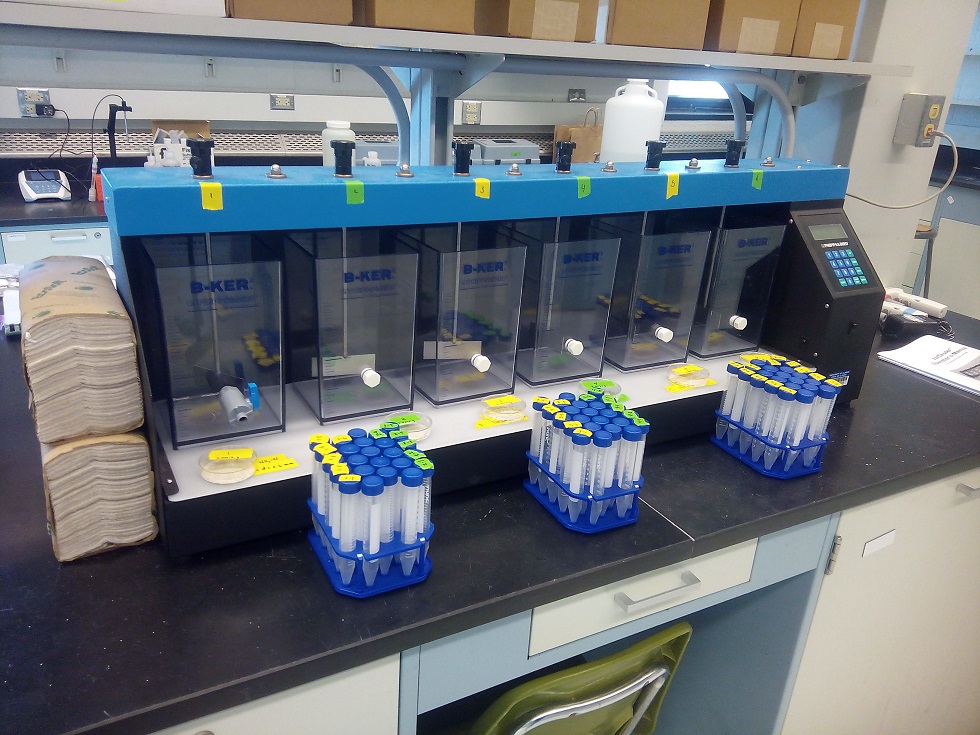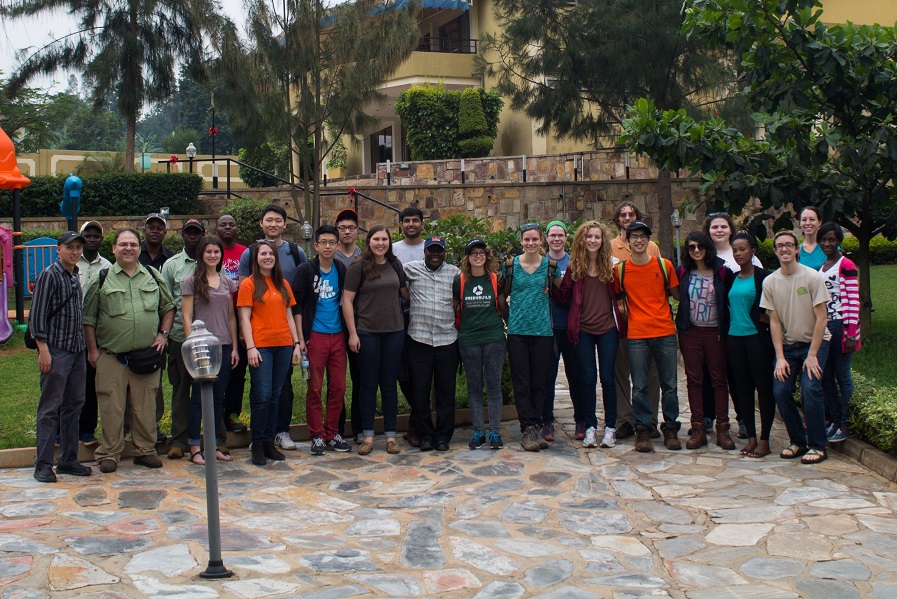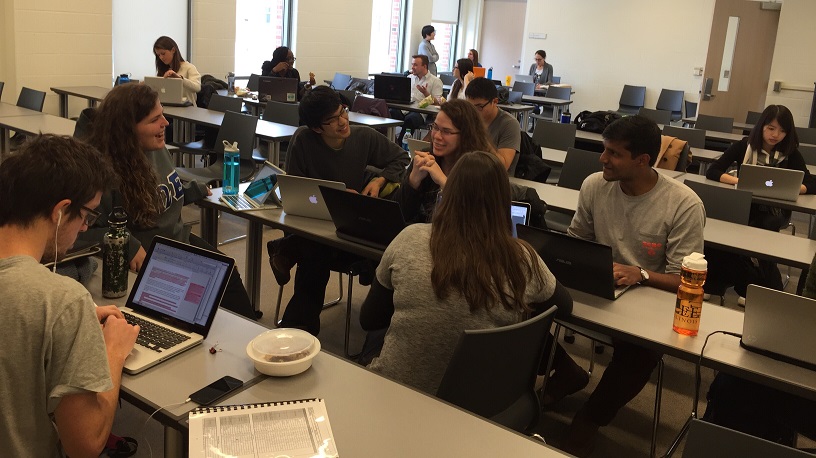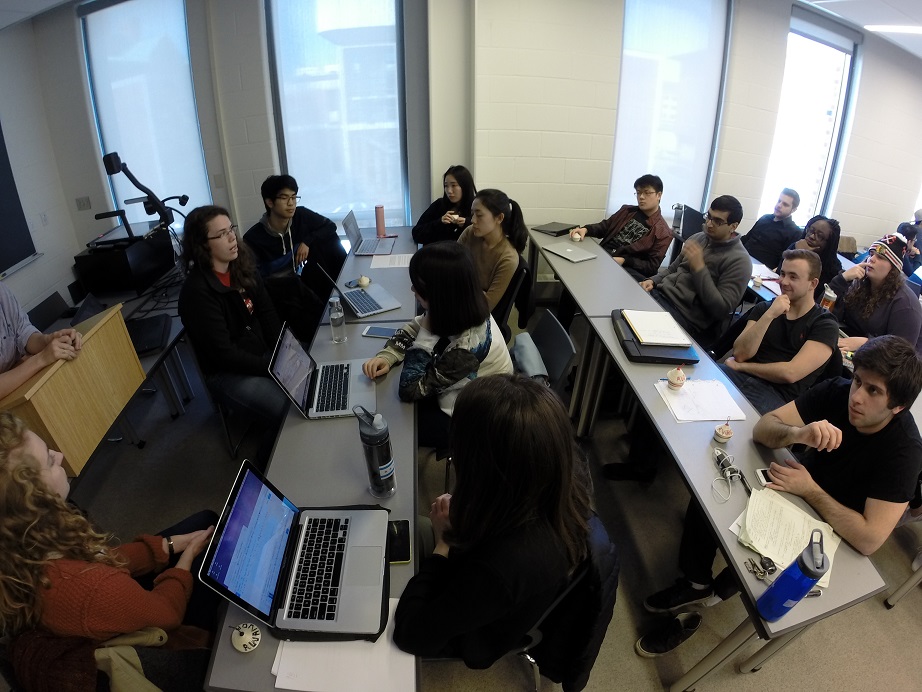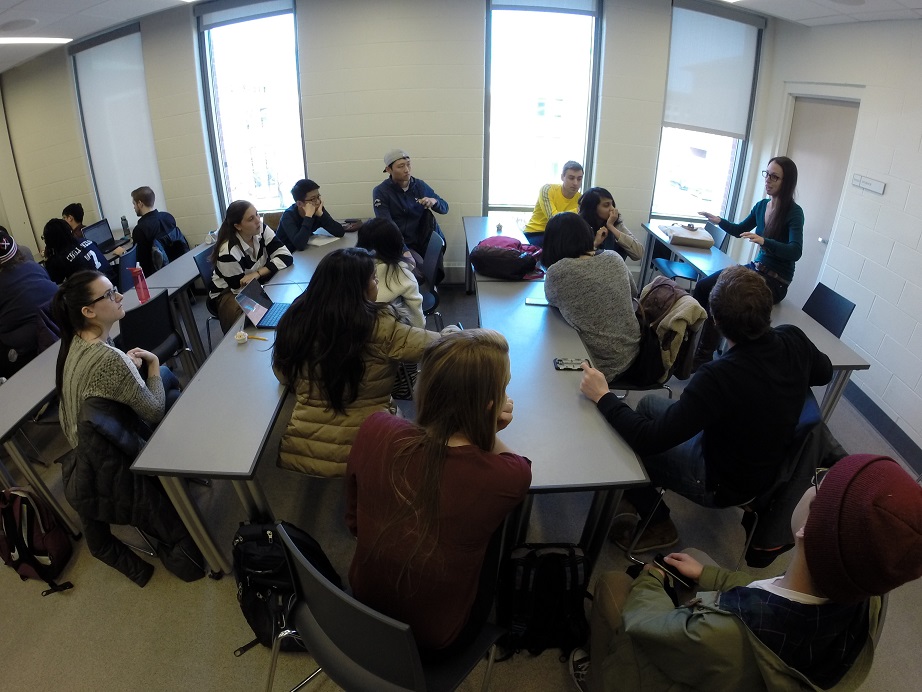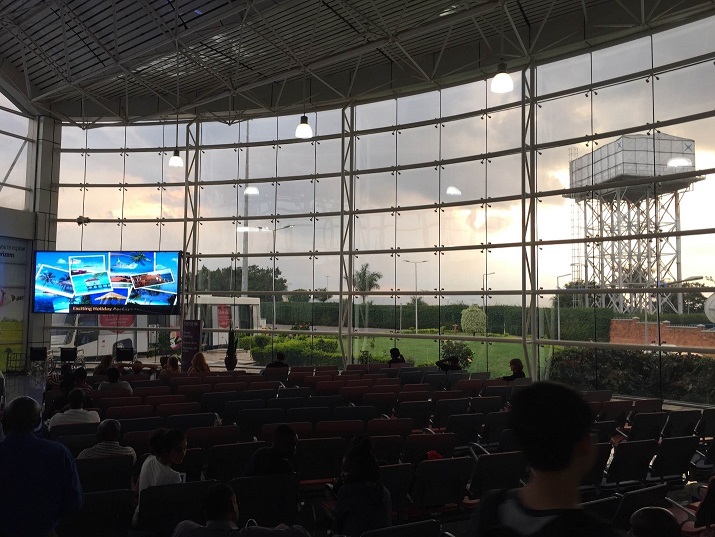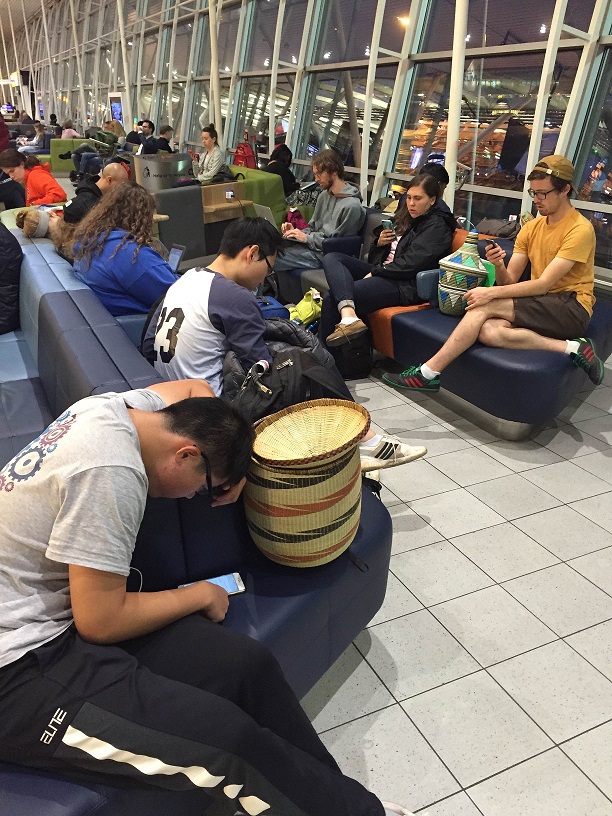Thursday March 31st, 2016 (By Lucas Keller)
After analyzing the laboratory results, students were ready to begin design work for their project locations. At the start of class, the students immediately broke up into their respective teams and began discussing what was necessary to tackle the challenges associated with each project site. Team 1 is working on a design at Lake Rugezi. Team 2 is working on a design for the Nyamabuye Water Treatment Plant. Team 3 is working on a design for the Muhondo School.
Specifically, team 3 is looking to improve water quality, water quantity, sanitation, and energy at the Muhondo School. The school currently uses a rainwater catchment system to provide students water. There are two areas team 3 believes they can improve the system in place. No treatment system is in place for the rainwater collection. This leads to high amounts of turbidity, ammonia, nitrite, and pathogens in the collected water. The team is working to find a feasible design that can eliminate these contaminants from the water. The laboratory results have given the team a good idea about what filtration and disinfection processes might work best at the school. In dry season, the school finds themselves with water shortages. The team will design additional collection systems based on the available area at the school in an attempt to lessen this shortage. The energy and sanitation section of the team is designing a handwashing system, as well as toilets that will work best with the anaerobic digester the school has showed interest in. Ideally, the anaerobic digester has the potential to improve sanitation and provide the school with additional energy.
Team 1 and Team 2 assembled to work through designs specific to their locations. After design work, the teams began to prepare a preliminary design presentation. The presentations will take place on Tuesday, April 5th. Each team will present their proposed design. The goal is to allow the other teams to provide feedback on this design and allow for each team to hone and improve their design based on this feedback.

